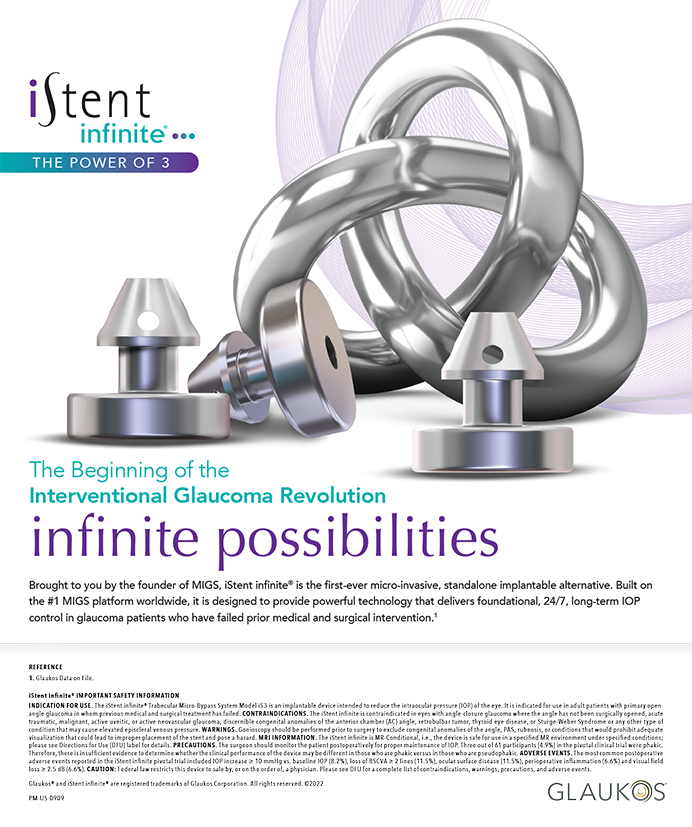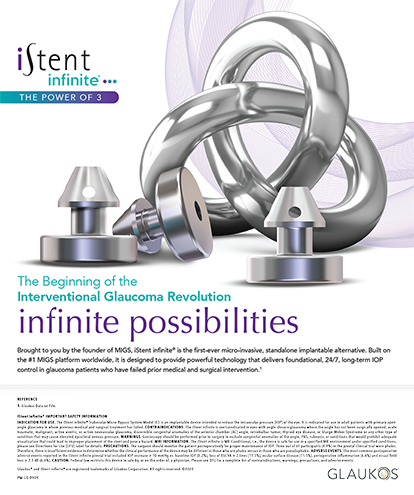Let’s be honest: We all want growth. In the decade that I have helped physicians market their practices, I have yet to come across a doctor who genuinely isn’t interested in growing his or her practice, expanding operations, or at least filling the patient pipeline. It is human nature to want to grow. We all want to evolve and expand, reach beyond what we once thought possible, and feel a sense of pride in our accomplishments.
Growing a practice is tremendously difficult, however. In order to enjoy the benefits of sustainable growth, you must consistently tell a good story and communicate the unique value your practice provides, and you must do so across every facet of your marketing. The patient experience starts well before patients set foot inside your practice. Research has shown that it takes an average of seven touchpoints with a brand before someone feels comfortable enough to take the next step, whether that is making a purchase or simply contacting the business for more information.1
There are myriad ways to achieve such growth in this competitive age. An article this brief cannot begin to scratch the surface of the complex world of marketing or cover every nuance of developing an in-depth marketing plan. However, there are two tenets of marketing for growth-oriented physicians that we have found to be true over the years: Connect with your patients where they already are and find a way to get them to tell your story for you.

Tenet No. 1: Connect With Patients Where They Already Are
There are many ways for a physician to market his or her practice with an eye on growth, but some are better than others. In our experience, social media is over-hyped; it often does not provide a return on investment commensurate with the time required to manage it well. Plus, many patients are growing wary of the privacy practices of large social media providers. Traditional marketing media such as radio, television, and print—although they have been useful for decades—lack the metrics and data analysis that can help practices make better decisions. Depending on the demographic you want to reach, traditional marketing channels may not effectively connect with your target market.
Fortunately, there is a more effective way to reach more patients, and the statistics don’t lie. When it comes time to find a doctor or perform due diligence on a procedure, the vast majority of patients begin their search where everybody searches for everything—Google. Research suggests that nearly eight of 10 patients turn to Google to research physicians before picking up the phone or coming in for a visit.2
Ranking in the first few results on Google is notoriously difficult and time consuming, especially for new practices for whom fast growth is paramount. We’ve seen Google Ads (formerly Google Adwords) act as a tremendously effective marketing channel for ophthalmologists, regardless of subspecialty. In our opinion, it provides the best tools to identify and capitalize on patient interest, research, and purchase intent. Google Ads occupies a sweet spot in a growth-oriented marketing plan: It costs less than many other forms of traditional advertising, there is a massive user base, it provides the practice with more data with which to inform strategic decision-making, and the organization retains complete creative control over its story.
Unlike social media marketing or search engine optimization (each of which is important in its own right), the effectiveness of your practice’s marketing on Google Ads is not at the mercy of an algorithm change. However, effectively crafting a winning advertising campaign requires a few key elements.
Create compelling ads and nail your story. To make your campaign as effective as possible, your ads must be compelling. To make your message as compelling as possible, take the patient’s perspective into account. What are his or her questions and concerns, and how can you answer those questions directly in your ad? What is he or she most likely to type into Google, and how can your ads match those needs? Are questions answered on your website after he or she clicks your ad? Getting into the minds of your patients is the most practical way to develop compelling ads and get your story right.
Target the sweet spot. One of the benefits of Google Ads is the advanced targeting it allows. By using demographic data such as age, gender, and location and tools such as advanced keyword matching techniques, you can ensure that your messaging hits the right patient at the exact right time. However, targeting appropriately takes experience and experimentation. Target too tightly and you will likely miss some patients; cast the net too wide and you may dilute your effectiveness and spread your budget too thin.
Focus on the metrics that matter. Social media and many traditional marketing efforts are obsessed with what we call vanity metrics. How many likes did you get? What’s the subscriber base of the newspaper that ran your ad? These numbers couldn’t matter less: They do not drive results.
With Google Ads, the temptation to focus on vanity metrics is still present, but it is diminished. Don’t worry about your website traffic or how many people saw your ad. Instead, focus on how many new leads you received and how many visitors you converted. I’d rather have a Google Ads campaign that drove only 100 people to a practice website but converted 20% of them into patients than a print ad that drove 1,000 but converted only 1%.

Tenet No. 2: Get Your Patients to Tell Your Story for You
Google Ads meets patients where they are and displays the right message at the right time. That is effective for reaching patients who begin their searches online, but what about opportunities elsewhere? Yes, most patients turn to Google first in their search to find a doctor, but not everybody will. Where do those patients go instead?
Research suggests that patients who don’t immediately turn to a search engine instead solicit the advice and experiences of friends or family members. However, in the absence of a friend or family member’s recommendation, a surprising number of patients turn to online reviews. In one survey, 84% of respondents said that they trust online reviews as much as a personal recommendation from someone they know.3
Online reviews are incredibly important to practices. We are living in the age of the empowered patient. Online review signals—including the number of reviews a practice has, its average rating, and the recency of its reviews—are the third most influential factor in Google’s ranking algorithm. Therefore, a good review profile can be a boon for your practice’s online visibility. Going from a 3-star average to a 4.5-star average on Google yields 25% more clicks and phone calls, and our internal research indicates that the average practice receives a 5% to 9% revenue bump for each 1-star increase in its online reviews. Additionally, 57% of respondents to a survey said that they will only patronize a business if it has 4 or more stars online.3
To capitalize on the human tendency to share experiences with others, physicians must leverage their patients’ experiences and connections to grow their patient pipeline through organic referrals. Although there are many ways to do this, the most effective strategy we’ve found is to use a patient review generation system.
There are many patient review generation systems on the market that allow you to automatically collect feedback, monitor your online presence, and gently encourage patients to leave reviews. Popular choices include Birdeye, Grade.us, and Podium. My favorite, in terms of ease of use and bang for your buck, is PatientVoice (although I am biased because this is the review generation software my firm developed for physicians).
A good patient review generation system should enable you to gain internal feedback from your patients, incentivize patients to share their opinions by leaving a review for your practice online, and help you review and manage your online reputation across popular platforms such as Facebook, Google MyBusiness, Healthgrades, and Yelp, all from one dashboard.
Sadly, many practices do not capitalize on the power of online patient reviews because they either do not recognize their importance or do not believe that their patients would comply if asked to tell others about their experiences. However, a consumer survey found that seven of 10 respondents would gladly leave a review about their experience if the business would ask for it.3
Many practices are not benefiting from the boon that patient reviews provide simply because they do not ask their patients to write them. Practices that do not leverage patient reviews leave money on the table. Research suggests that 48% of patients would go out of their insurance network for a provider with more favorable reviews than an in-network provider.2
We believe that practices that want to put their growth on autopilot should be asking every single patient for feedback. Implementing a system to automate your patient review generation process is a low-cost way to transform your patients’ experiences into a revenue-generating asset, by empowering them to help you do your marketing for you.
Bringing It All Together
There are many great marketing strategies and solutions, but those discussed here can have a particularly high impact for a reasonable financial investment. Needless to say, these are not the only to avenues to explore if you want to grow your practice, and I do not believe they should be the only elements of a practice’s marketing plan. But they do deserve consideration for their effectiveness.
Put simply, Google Ads and patient review generation systems are two of the most effective growth mechanisms we have found after nearly a decade of marketing for medical professionals. They just work.
By connecting with patients where they are, developing connections with them, and leveraging their voices and experiences to help build brand awareness, the growth-oriented practice should be able achieve growth goals and increase revenue in no time.
1. It takes 6 to 8 touches to generate a viable sales lead. Here’s why. Salesforce. April 16, 2015. https://www.salesforce.com/blog/2015/04/takes-6-8-touches-generate-viable-sales-lead-heres-why-gp.html. Accessed May 20, 2019.
2. How patients use online reviews. Software Advice. https://www.softwareadvice.com/resources/how-patients-use-online-reviews/. Accessed May 20, 2019.
3. Local consumer review survey. Bright Local. December 7. 2018. https://www.brightlocal.com/research/local-consumer-review-survey/. Accessed May 20, 2019.
'); console.log(imgSrc + " imgsrc"); }); $('.fancybox-' + count).fancybox({ helpers : { title: { type: 'inside' } } }); count = count + 1; $('#fb_unique').data('count',count); }, 1200);




